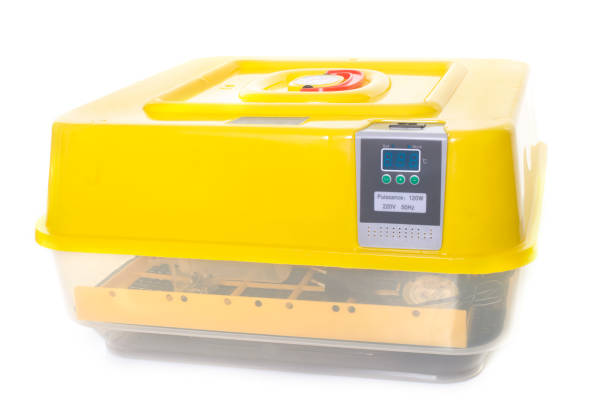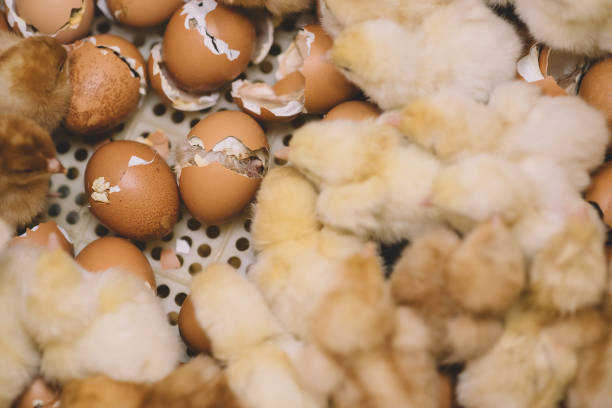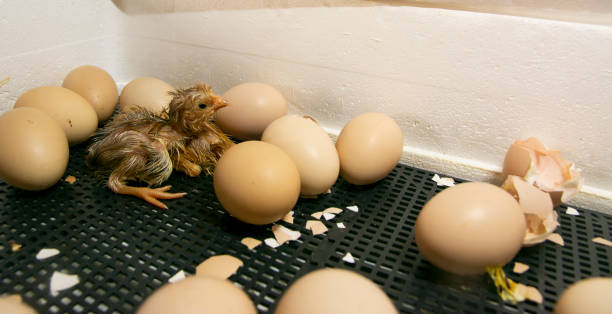The Definition of a Chicken Incubator
At its core, a chicken incubator is a meticulously engineered device specifically designed to recreate the optimal conditions necessary for eggs to hatch. It is essentially a controlled environment that provides warmth, humidity, and necessary airflow, mimicking the nurturing environment an egg experiences under a broody hen.
The purpose of a chicken incubator is to facilitate the successful development of fertile eggs into healthy chicks, enabling poultry enthusiasts to take an active role in the incubation process.
How Chicken Incubators Work

Chicken incubators work by recreating the three key factors crucial for the successful incubation of eggs: temperature, humidity, and ventilation. Let's explore each of these elements in more detail:
Temperature Control
Maintaining a consistent and precise temperature is vital for proper embryo development. Chicken eggs generally require a temperature between 99°F and 101°F (37°C to 38°C) for successful incubation. Incubators are equipped with built-in thermostats or digital temperature controllers that monitor and regulate the internal temperature. Heating elements or heat sources, such as electric bulbs or heating pads, help maintain the desired temperature range.
Humidity Management
Adequate humidity is equally important during the incubation process. Chicken eggs need an appropriate amount of moisture to prevent dehydration and enable proper development. Most incubators have water reservoirs or trays designed to increase humidity levels. As the water slowly evaporates, it creates the ideal humidity required inside the incubator. The optimum humidity range for successful incubation is generally around 50-60%.
Ventilation and Airflow
A healthy airflow is vital within the incubator to exchange carbon dioxide with fresh oxygen. Proper ventilation helps maintain a fresh and oxygen-rich environment necessary for the growing embryos. Many incubators include vents or small openings to facilitate the exchange of air. Additionally, some models incorporate fans or ventilation systems to ensure consistent airflow and prevent the buildup of stagnant air pockets.
Fertilized Eggs and Incubation

To fully understand the magic of chicken incubators, it's important to start with fertile eggs. Fertilized chicken eggs are obtained either through breeding or by purchasing them from breeders or hatcheries. These eggs contain a developing embryo that, under the right conditions, will hatch into a chick.
Once you have fertilized eggs, they are carefully placed inside the incubator. It's essential to ensure the eggs are clean and unwashed since the naturally occurring protective coating on the eggshell helps maintain ideal incubation conditions. The eggs are positioned horizontally or can be placed in specially designed trays or racks that allow for proper airflow and egg turning.
Egg Turning

In nature, a broody hen diligently turns her eggs multiple times a day to ensure uniform heat distribution and prevent the embryo from sticking to the inner membrane. In an incubator, the process of egg turning is replicated using specialized mechanisms. Automatic egg turners are commonly found in modern incubators and gently rotate the eggs at regular intervals. This process helps distribute heat and nutrients evenly, fostering the healthy growth of the developing embryo.
Egg turning usually occurs approximately three to six times per day, mimicking the natural rhythm that a broody hen would provide. However, it's crucial to follow the manufacturer's instructions or refer to breed-specific guidelines as different chicken breeds may require variations in egg turning frequency.
Candling and Monitoring Embryo Development
As the days elapse during the incubation period, it becomes possible to monitor the progress of the developing embryo through a process called candling. Candling involves shining a bright light source against the eggshell to see through it and observe the internal changes.

Regular candling sessions are conducted by gently lifting the eggs out of the incubator and placing them against the light source. Candling allows you to observe the growth and development of the embryo, identify potential issues like infertility or early mortality, and confirm the presence of a healthy embryo.
Through candling, you can witness the embryo gradually forming structures such as the circulatory system, the developing chick's body, and even the movement of the chick itself as it responds to external stimuli. This captivating process serves as a window into the awe-inspiring journey of life taking place inside the egg.
Hatching

After approximately 21 days of incubation, the eggs are prepared for hatching. At this stage, the embryo becomes more active, positioning itself to prepare for its grand entrance into the world. The chick begins to peck at the inner shell, creating a small hole known as a "pip." This pip allows the chick to breathe fresh air and prepares them for the final stage of hatching.
Over the next few hours or days, the chick will progressively break through the shell using its "egg tooth" until it emerges, exhausted but triumphant, into the incubator. Witnessing a chick's emergence from its shell is a breathtaking and heartwarming moment, bringing a sense of fulfilment to the entire incubation journey.
Final
Chicken incubators are marvellous devices that allow poultry enthusiasts to witness the extraordinary process of new life unfolding before their eyes. By providing precise temperature control, maintaining optimal humidity levels, promoting proper ventilation, and supporting egg turning, incubators create an environment that nurtures the development of a chick from an egg.
The use of a chicken incubator empowers individuals to actively engage in the incubation process, fostering a deeper connection with the wonders of nature and the cycle of life. As you embark on your chicken incubation journey, remember to follow manufacturer guidelines, consider breed-specific requirements, and approach the process with patience and care. With the right knowledge and equipment, your chicken incubator will enchant you with the mesmerizing marvels of life's most captivating transformation.



Leave a comment
All comments are moderated before being published.
This site is protected by hCaptcha and the hCaptcha Privacy Policy and Terms of Service apply.